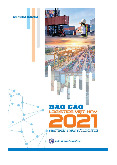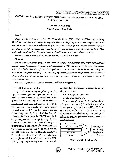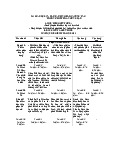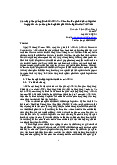















Preview text:
2.1.1. Cross docking:
Pictures: DHL’s cross docking
DHL’s company have 64 dock doors to handle all of our inbound and outbound
truck. 95 trailers,2000 trucks come in and out on a daily basis pallet are offloaded and the
receiver verifies the shipper’s Bill off Landing
2.1.2. DHL’s Bonded Warehouse:
Pictures: DHL’S Bonded Warehouse
DHL invest a brand new 25,000 sq m hub in Segro Park Coventry Gateway, located
south of Coventry Airport. DHL will also feature secure bonded storage and customs
capabilities to support international e-commerce, a 48-door cross-dock facility and state-
of-the-art mechanisation, allowing automatic sortation of mixed-sized and weight items
through high-speed sortation equipment.
Pictures: DHL Toyoko Distribution center
DHL Tokyo Distribution Center (TDC) is currently situated, the new DHL Express
Tokyo Gateway is accessible from the Narita International Airport, Haneda Airport, and
Tokyo’s business districts. The new Osaka Distribution Center will increase shipment
processing capacity by more than 50%.
2.1.2. Warehouse Management System ( WMS ): 2.1.2.1. Internet of Things:
Pictures: DHL is using Internet of Things
The internet of things is a technology that allows us to add a device to an inert object (for
example: vehicles, plant electronic systems, roofs, lighting, etc.). IoT measure
environmental parameters, generate associated data and transmit them through a communications network.
The Internet of Things (IoT) has made full supply chain transparency - shipment
visibility, asset tracking, and condition monitoring - more possible than ever. As network
telecommunication systems speed up and expand reach, sensors are becoming
increasingly more affordable, thus making the potential for realizing new operational
efficiencies through a dedicated IoT strategy boundless.
Shipment monitoring for security and loss prevention:
Pictures: Prevent loss of goods
Iot can now monitor items as they move around a warehouse or distribution center as
well as across the entire supply chain.
Devices using GPS technology have been around for a long time, but it’s only recently
that they have the capabilities to add real value to logistics. Small sizes, long battery
lives, and strong signal strengths have made them a perfect solution for quality control
and loss prevention in small package shipping. Today’s devices come in all shapes and
sizes and can detect temperature, humidity, light, vibrations, etc.
Picture : Cold chain monitoring
IoT device now keeps track of the temperature
Covid-19 pandemic has put IoT to the test – and it passed. BioNTech announced its
vaccine needed to be transported at -70°C, it was up to logistics companies to develop
solutions to provide end-to-end visibility
IoT devices record and report conditions based on customer requirements, with the
system flagging deviations detected.
Picture: Facility condition monitoring
Monitoring environmental conditions: Monitoring a facility was a manual and time-
consuming process. IoT devices are now connected using low-powered wide-area
networks (LPWANs), transmitting information in real-time to a central platform and the customer. RFID: Picture: RFID
Smart Sensor RFID: Monitors temperature data during the course of transportation. RFID
can be used in air, sea, land transportation without restriction because it is a passive
device based on RFID technology. The data can be analyzed in retrospect via the online
Web Portal and are available 24/7 world wide. WHM:
Pictures: DHL’s Warehouse Management
WHM ease the complex storage and distribution management as it integrates with the
framework of ERP to support the basic processes in warehouse areas. Barcode : Picture: Barcode
Barcode located on all customer goods and it is optical and electronically readable
respentation of information that consists of various widths or parallel lines and spaces.
Three types: 2-D Codes 3- D Code 4-D Code.
2.2.2. Material Handling System: Dock shelter and Dock Lever: Picture: DHL Dock Shelter
21 complete loading bays with swing lip dock levellers, sectional overhead
doors & curtain dock shelters. Including sectional overhead doors in 4 level access ramps. Picture: DHL dock Level
DHL transports 40 million pounds of freight and 2 billion shipments a year, with 76,200
vehicles and more than 250 aircrafts. The company employs over 530,000 people worldwide Folklift:
Pictures: DHL Automatic FolkLift
DHL Supply Chain, the contract logistics arm of Deutsche Post DHL Group, is further
accelerating the commercial deployment of autonomous forklifts and pallet movers in its
more than 1,500 warehouses worldwide, focusing on sites in labor-tight markets across
Europe, the United Kingdom, Ireland and North America. Autonomous pallet movers can
handle both horizontal and vertical movements of palletized goods, making them
especially useful in sectors such as consumer, retail or automotive that are characterized
by full-pallet handling. The deployment is part of DHL Supply Chain's Accelerated
Digitalization agenda, a strategy for commercializing and scaling innovative solutions and new technologies.
Autonomous forklifts take over the picking, put-away and replenishment of full pallets in
warehouses, reducing the number of manual pallet transfers without requiring significant
changes in warehouse infrastructure. Such forklifts can easily reach DHL’s highest
warehousing racks at heights of more than 10 meters and can handle all kinds of pallets,
stillages and other unit load storage equipment. Pallet: Pictures: DHL uses Pallet
Wooden barrels and crates were once the de facto standard of storing and transporting
goods, but moving them was a labor intensive and inefficient task. Shippers had to find a
better way to easily stack and transfer huge amounts of goods quickly.
Pallets are equipment for loading goods. Products are stacked up and evenly arranged on
the pallet before they are secured together by cling wrap or other means. The forks of the
forklift are then inserted into a cavity between the top and bottom platforms of the pallet,
before being raised to lift and move as a single unit. Scan:
DHL’s employees use a barcode scanner to read the barcode. Conveyor: Picture: DHL Conveyor
DHL Express plans to install a unique automated conveyor belt for palletised items in its
new Leipzig terminal in order to speed up processing times. The conveyor system
is part of the €150m development of a second terminal at its
European hub that will see the freight processing capacity increase
by 50% to more than 15,000 shipments per hour.
To improve processing time, the intergrator will install a track
system that will be able to transport ‘non-conveyable items’ from
one end of the terminal to the other.
2.3. Warehouse Layout and Product flow options: Picture: DHL warehouse Layout
DHL uses centralized Bonded warehousing and distribution centers. The warehouses are
divided in 2 parts such as: receiving, storage. The storage model used by DHL prevent
fire and explosion in the warehouse, protect the goods in the warehouse safely.
All DHL’s warehouses are Bonded to pushing out the payment of custom duties until the
goods are released from the bonded warehouse pushing out the payment of custom duties
until the goods are released from the bonded warehouse. Reference:
https://www.dhl.com/global-en/delivered/digitalization/the-value-of-iot-in-supply-
chains.html#:~:text=IoT%20delivers%20transparency%20and%20resilience&text=A%20tour%20through
%20the%20DHL,a%20commodity%20but%20a%20constant.
https://www.loading-systems.com/markets-solutions/logistics/dhl




